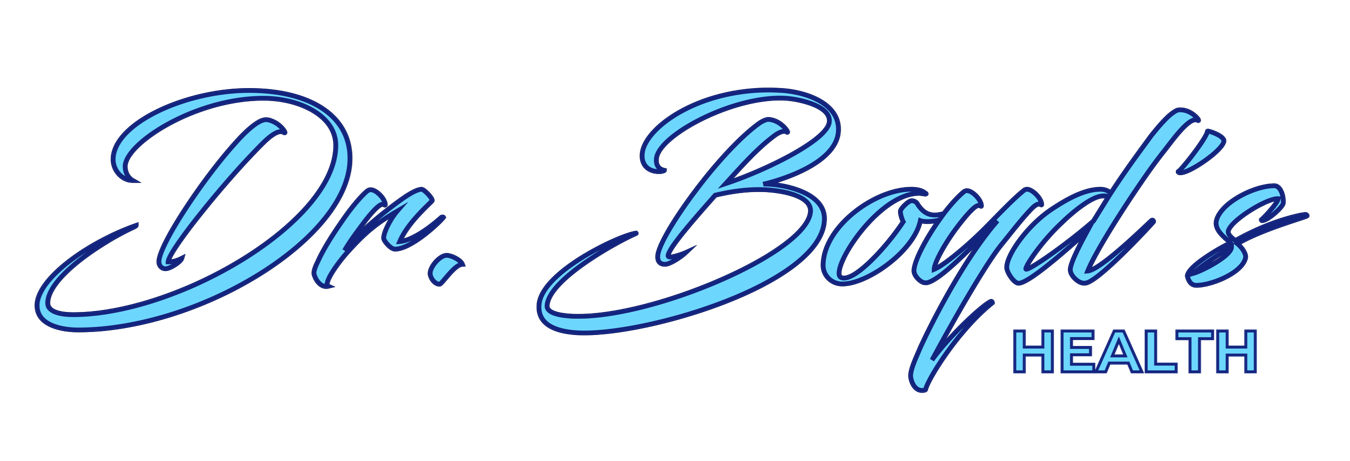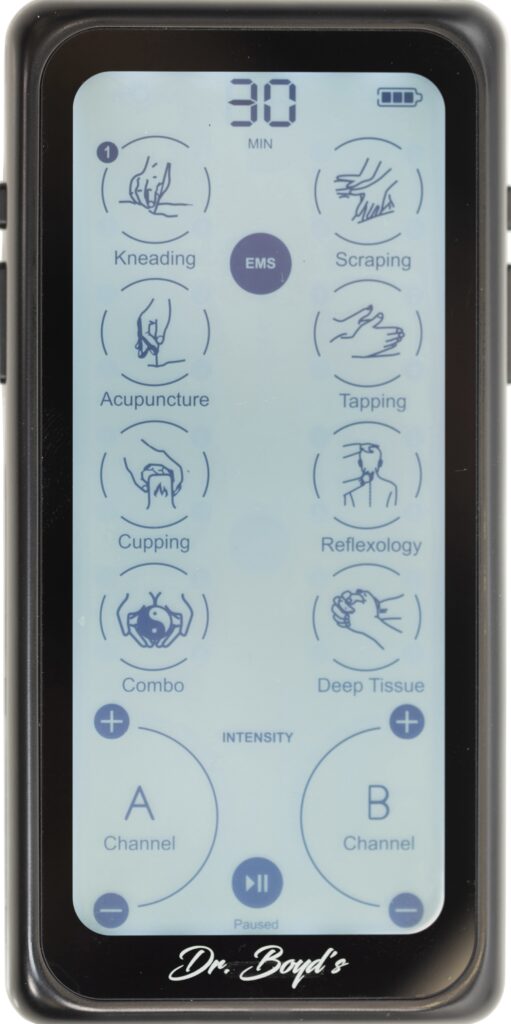What is a TENS & EMS unit?
TENS is an acronym for Transcutaneous Electrical Nerve Stimulation (TENS). Transcutaneous Electrical Nerve Stimulation (TENS) therapy involves the use of low-voltage electric currents to treat pain. A small device delivers the current at or near nerves. TENS therapy blocks or changes your perception of pain.
Transcutaneous Electrical Nerve Stimulation (TENS) is a therapy that uses low voltage electrical current to provide pain relief. A TENS unit consists of a battery-powered device that delivers electrical impulses through electrodes placed on the surface of your skin. The electrodes are placed at or near nerves where the pain is located or at trigger points.
There are two theories about how Transcutaneous Electrical Nerve Stimulation (TENS) works. One theory is that the electric current stimulates nerve cells that block the transmission of pain signals, modifying your perception of pain. The other theory is that nerve stimulation raises the level of endorphins, which are the body’s natural pain-killing chemical. The endorphins then block the perception of pain.
The battery-powered TENS device is about the size of a small cell phone. The device comes with several sets of electrode wires and end pads. The electrodes connect to the device at one end and are attached to about 2 inch by 2 inch pads at the other end. Each pad has an adhesive backing and is positioned on your skin in specific areas along nerve pathways in the area to be treated. (Instead of direct contact with the skin, an acupuncturist may connect the TENS unit to acupuncture needles.)
The device delivers pulses of electrical energy. Pulses can be adjusted for intensity, frequency, duration, and type (burst or continuous). A doctor, physical therapist, or acupuncturist determines and adjusts the machine’s settings.
TENS is a non-invasive method of pain relief. It can be used alone or in addition to prescriptions or over-the-counter pain-relieving medications. The amount of medication may be able to be reduced in some patients who use TENS therapy. Do not stop taking or make any adjustments in your dose of medications without discussing it with your doctor first.
Another benefit of the TENS unit is that it is small and portable and therefore can be used at home or away, anytime pain relief is needed.
TENS therapy has been used or is being studied to relieve both chronic (long lasting) and acute (short-term) pain. Some of the most common conditions for which TENS has been used include:
- Osteoarthritis (disease of the joints).
- Fibromyalgia (aching and pain in muscles, tendons, and joints all over the body, especially along the spine.
- Tendinitis (an inflammation or irritation of a tendon).
- Bursitis (inflammation of the fluid-filled sacs that cushion joints).
- Labor pain.
- Low back pain.
- Chronic pelvic pain.
- Diabetes-related neuropathy (damage to the nerves that connect the brain and spinal cord to the rest of the body).
- Peripheral artery disease (“hardening of the arteries” that circulate blood to the body).
Do not use TENS therapy at these specific body locations if you have any of the following conditions:
- An implantable device (cardioverter/defibrillator, neurostimulators, bone growth stimulator, indwelling blood pressure monitors). Do not use TENS therapy over or close to the areas where an electronic device is implanted. TENS could cause these devices to malfunction.
- Are pregnant. Do not apply TENS therapy to the abdomen; pelvic area; lower back; or to acupuncture points at the knee, hand or ankle. (However, TENS can be used for labor pain.)
- Cancer. Do not apply electrodes to areas of the body where there is known or suspected cancer. Do not use TENS if you have undiagnosed pain and a history of cancer in the last 5 years.
- Epilepsy. Do not apply electrodes to your head, neck or shoulders. The impulses could cause seizures.
- Deep vein thrombosis or thrombophlebitis. Do not use TENS therapy as it may increase blood circulation, which may increase the risk of dislodging a blood clot.
- A bleeding (hemorrhagic) disorder or recent or actively bleeding tissue. TENS therapy could increase bleeding at the tissue site or increase the risk of bleeding in persons with bleeding disorders.
- Heart disease. Do not apply TENS therapy to the chest if you have heart disease, heart failure or arrhythmias.
In addition, TENS should not be applied:
- To infected tissues, wounds due to osteomyelitis or if you have tuberculosis. TENS therapy may result in the spread of infections.
- To areas of tissue that have been recently treated with radiation.
- To damaged skin (Except for open wounds where the intent is to use electrical stimulation to heal tissue. In these cases, therapy should be guided by a skilled therapist.)
- Near or over eyes or mouth, front or side of neck, or on the head.
- Near reproductive organs or genitals.
- To areas of the body that lack or have reduced sensation.
- In persons who have trouble communicating or who have mental impairment and cannot provide feedback to ensure the safe use of TENS.
If you have any current or past health issues, or any concerns or questions, always check with your healthcare provider before using TENS.
What is an EMS Device?
Electronic Muscle Stimulation (EMS) is a physical therapy and fitness technique. Like TENS, it involves a machine that transmits electrical impulses through electrodes that are applied directly to your skin.Unlike TENS, though, the electrodes from an EMS machine are applied to key muscle groups. A common muscle group EMS is used on is the quadriceps after knee surgery. The electrical signals trigger repeated contractions (tightening) of the muscles. The contractions can be short and frequent or long and sustained.This process is not all that different from the voluntary muscle contractions associated with strength training
Electronic Muscle Stimulation devices are used to “jumpstart” muscle contractions otherwise known as neuromuscular re-education. They may be found in fitness centers, as well as in physical therapy and rehabilitation clinics. Many EMS devices are also designed and sold for at-home use. The electrical impulse from an EMS device is stronger than that from a TENS machine. An EMS device shouldn’t be used to treat pain, and may cause damage to wound sites and incisions.
There are several theories on how an Electronic Muscle Stimulation (EMS) Device may assist in muscle strengthening. One potential reason is that when you maximally contract a muscle, at best, only 30% of all your muscle fibres are in a state of contraction. The remaining 70% are dormant and awaiting recruitment when the contracting fibres fatigue. With EMS, you can potentially electrically stimulate these resting muscle fibres to improve their strength. Clinically, EMS appears to be more effective when the muscles are frail and you have difficulty performing regular anti-gravity exercises.
Another reason that EMS potentially works is via an improvement in the recruitment of nerve conduction rates. Explained, it takes approximately 10000 repetitions for your brain to learn how to quickly send a message to your muscles via the quickest nerve pathways. This contraction pattern becomes your “memory engram”. The more frequent your muscle recruits, the better your body becomes at finding the fastest way to recruit that muscle. EMS can potentially provide you with repeated contractions to accelerate this learning process.
To achieve your best outcome, we recommend that you seek professional advice on best utilising your EMS machine from your local physiotherapist who has a particular interest in EMS muscle retraining and please consult with your physician.



